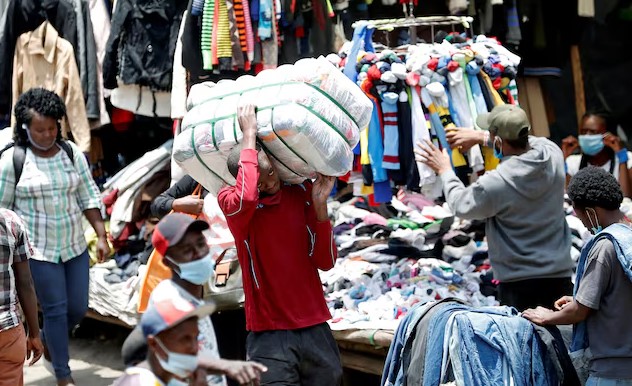A new report launched by the Mitumba Consortium Association of Kenya (MCAK) has revealed that Kenya spent more on importing new clothes than second-hand garments in 2024, challenging long-held narratives about the dominance of the Mitumba trade.
According to the Economic Survey 2025, textile imports of new clothing amounted to Ksh 60 billion in 2024, more than double the Ksh 28 billion spent on Mitumba imports. The findings are part of a broader economic report titled A Future Look at the Apparel and Footwear Industry in Kenya (2022–2037), authored by the Institute of Economic Affairs (IEA) and commissioned by MCAK.
Speaking during the launch event in Nairobi, IEA-Kenya CEO Kwame Owino dismissed claims that the Mitumba sector is to blame for the collapse of local textile industries. “It is not true that the availability of used clothes is the cause for failures in domestic textile companies,” said Owino.
The report highlights the critical role Mitumba plays in Kenya’s economy, providing livelihoods to over two million Kenyans—primarily women, youth, and informal traders across all counties. Additionally, the sector contributes approximately Ksh 12 billion annually in tax revenue.
Consumer data shows that the average Kenyan household spends Ksh 409 per quarter on used clothing, compared to Ksh 783 on new apparel. A staggering 91.5 percent of households that purchase second-hand clothes spend less than Ksh 1,000 per quarter, underscoring the affordability gap that Mitumba addresses.
In 2019, Kenyans spent a combined Ksh 197.5 billion on new and second-hand clothing and footwear, illustrating the significance of the apparel sector to household budgets and the national economy.
“There is a strong correlation between income growth and Mitumba consumption. For every 1 percent rise in income, demand for used clothing increases by 12 percent,” the report notes.
MCAK Chairperson Teresia Njenga emphasized that the goal is not to defend Mitumba, but to celebrate its contribution to economic growth, job creation, and environmental sustainability. “Used and new clothes serve different market segments and can coexist to generate maximum benefits,” she said.
The report calls for a liberalized policy environment that supports both Mitumba and domestic textile manufacturing. It cites Pakistan as a case study where the country has successfully balanced robust textile exports with significant second-hand clothing imports.
Mitumba also contributes to environmental sustainability by prolonging the life cycle of clothing and reducing textile waste, the study notes.
The report urges policymakers to adopt an inclusive framework that leverages both sectors to drive industrial growth, create jobs, and improve economic welfare across the country.


